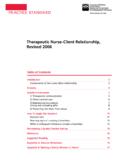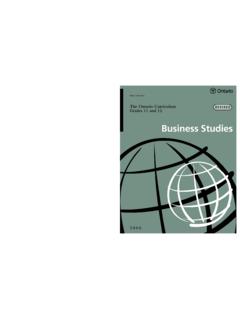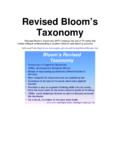Transcription of REVISED ASSESSMENT OF THE RISKS TO HEALTH AND THE ...
1 00 REVISED ASSESSMENT OF THE RISKS TO HEALTH AND THE environment associated with THE USE OF THE FOUR ORGANOTIN COMPOUNDS TBT, DBT, DOT AND TPT Opinion adopted by the SCHER during the 14th plenary of 30 November 2006 ORGANOTIN COMPOUNDS 2 ACKNOWLEDGEMENTS Members of the working group are acknowledged for their valuable contribution to this opinion: Prof. H. Autrup, Professor of Environmental Medicine, Department of Environmental and Occupational Medicine, University of Arhus, Denmark. Prof. W. Dekant, Professor at the Institut f r Toxikologie Universit t W rzburg, Germany Prof. B. Jansson, (Chairman and Rapporteur), Professor at the Institute of Applied Environmental Research, Stockholm University, Sweden. Prof. J. Linders, Risk evaluator, expert in Pesticides, Centre for Substances and Risk ASSESSMENT , National Institute of Public HEALTH and environment (IRVM), Netherlands. Dr.
2 E. Testai, Senior Scientist, environment and Primary Prevention Mechanisms of Toxicity Unit, Instituto Superiore di Sanit , Italy. Prof. M. Vighi, Professor of Ecology and Applied Ecology, Department of Environmental Sciences, University of Milano Bicocca, Italy. Dr. M. Viluksela, Senior researcher on Toxicology, Environmental HEALTH Department, National Public HEALTH Institute, Finland. External experts: Prof. P. Verger, Head of the INRA research unit on food risk analysis methodologies, France Prof. Wester, Head of the Department of Pathology National Institute for Public HEALTH and the environment , the Netherlands. Prof. B. Bilitewski, Institute of waste management and contaminated site treatments, University Dresden, Germany Keywords: SCHER, scientific opinion, organotin compounds, TBT, DBT, DOT, TPTORGANOTIN COMPOUNDS 3 TABLE OF CONTENTS 2 1. 4 2. TERMS OF 4 3. 5 Question 13 Question 13 Question 14 Question 14 Question 15 Question 17 Question 19 Question 19 4.
3 LIST OF 23 5. 24 ORGANOTIN COMPOUNDS 41. BACKGROUND During its 43rd plenary meeting of 28 May 2004, the Scientific Committee on Toxicity, Ecotoxicity and the environment (CSTEE) issued an opinion entitled " REVISED ASSESSMENT of the RISKS to HEALTH and the environment associated with the use of organotin compounds" based on a REVISED report produced by the consultant Risk & Policy Analysts (RPA). The SCTEE concluded that the report suffered from data gaps that undermined the reliability of the conclusions on RISKS . DG ENTR has therefore requested RPA to update its report by taking into consideration the CSTEE recommendations, in particular to use the concept of a group TDI for 4 substances with similar endpoints. The 2005 revision of the RPA report has now been completed. 2. TERMS OF REFERENCE (1) The Scientific Committee on HEALTH and Environmental RISKS (SCHER) is invited to comment on whether the recommendations made by the SCTEE in its former opinion on the same topic dated 28 May 2004 have adequately been taken into consideration by RPA.
4 (2) SCHER is requested to assess whether the 2005 revision of the RPA report has adequately addressed the RISKS posed by the four organotin compounds TBT, DBT, DOT and TPT, both for human HEALTH and the environment . Content from the previous RPA reports carried out from 2002 and 2003 as well as the opinion of the relevant EFSA panels on additives, flavourings and materials in contact with food (EFSA 2005) and on contaminants in the food chain (EFSA 2004) should also be taken into account. (3) SCHER is requested to assess the overall scientific quality of the 2005 revision of the RPA report. SCHER is specifically requested to comment on the methodology and the assumptions used, exposure and emissions calculations, and on the conclusions given in the report. (4) The SCHER is requested to comment and give an opinion on the HEALTH RISKS to consumers that result from exposure to organotin compounds from the various non-food consumer product sources of exposure, or from environmental sources as reported in the studies (tables 3 and 4 of the executive summary, and on each specific exposure scenario of the 2005 RPA report).
5 (5) In collaboration with the EFSA panels and taking into account the exposures of humans to organotin materials from foods, food contact materials, and non-foods as presented in the RPA reports and EFSA panel opinions, the SCHER is requested to assess and quantify (if possible) the total integrated (food and non-food) RISKS of humans from organotin compounds. SCHER is in particular requested: 5A - to comment, on whether conclusion (ii*) risk sources should be considered separately (on an exposure by exposure case basis) to estimate the real level of risk to adults and children, or whether conclusion (ii*) RISKS sources should be considered collectively, taking into consideration the fact that TBT, DBT, DOT and TPT shall be viewed as additive both for the target organs and for the mode of actions. 5B - If the answer to 5A is that risk (ii*) sources should be considered collectively: SCHER is requested to comment on whether it is realistic to conclude that the RISKS for 25% of adults and 70% of children are likely to exceed 100% group TDI taking into consideration that it is likely that a consumer will be exposed to more than one ORGANOTIN COMPOUNDS 5exposure route that a consumer may be exposed to several conclusion (ii*) RISKS sources.
6 5C - SCHER is requested to comment whether it is realistic to conclude that, even if a consumer is exposed to several conclusion (ii) RISKS sources (< 20% TDI), the corresponding RISKS from these conclusion (ii) sources combined would be below 100 % TDI (for a group TDI both for adult and children), and therefore lead to a negligible risk. (6) In preparing this integrated ASSESSMENT , the SCHER is requested to comment as to whether the total ban of organotin compounds in anti-fouling paint (2003), and the ban of the presence of these compounds in EU waters by 2008 will, by itself, reduce the RISKS (from a conclusion (iii) to (ii)) associated with the consumption of fish/seafood contaminated with the organotin compounds under consideration within a reasonably short period? Should other organotin compounds be taken into consideration when considering the possible establishment of a maximum threshold limit concentration in fish?
7 (7) SCHER is requested to comment on whether risk conclusion (iii) predicted for child consumers due to organotin-based fish products intake > 100 % TDI is reliable, both at local, regional and continental levels. (8) SCHER is requested to comment on whether significant additional risk may be posed to consumers and environment by the additional exposure to organotin compounds such as MBTO, DBTO, etc in addition to the targeted group TBT, DBT, DOT and TPT. (9) SCHER is requested to give its opinion on whether emission of the targeted group TBT, DBT, DOT from plant processing and recycling PVC (flexible and rigid) or at landfill pose a significant risk for adults or children via environment , at local, regional or continental levels. 3. OPINION The SCHER, supported by external experts including representatives from EFSA Scientific Panels has reviewed the new RPA report (September 2005) on organotin compounds (OTs).
8 First the comments on the report and, to some extent, the OTs in general will be presented, and then the specific questions forwarded to the committee will be addressed. The ASSESSMENT of environmental and human HEALTH RISKS caused by the OTs is difficult. The large number of compounds with very different properties in the group makes it difficult to make general conclusions. An unknown fraction of the added substances are also changed to new compounds in some of their functions ( as stabilisers) and in the environment . There are not measured data available for the physical and chemical properties for all these substances. Properties like water solubility, dissociation and octanol-water distribution are also dependent on a number of conditions like temperature, pH and salinity (Laughlin et al, 1986b; Inaba et al, 1995; Arnold et al, 1997), which makes it difficult to estimate these properties. The picture is further complicated by the wide use of the OTs for very different purposes, including applications in consumer products, and the ASSESSMENT has to be based on a number of assumptions.
9 environment ORGANOTIN COMPOUNDS 6 Environmental exposure The environmental exposures have been estimated using the procedures described in the TGD and complemented with measured data where such were available. The uncertainties in the ASSESSMENT are large due to the limited amount of data available for the OTs, and that their physical and chemical properties make the well established model calculations less useful ( logKow for dioctyltin ethylhexylmercaptoacetate (DOT- EHMA) is calculated to more than 15 by the KOWWIN program). The authors also point at the uncertainties at several places in the report. One of the EHMA ligands in OTs added to PVC is partly exchanged with a chloride ligand during the processing of the material, and the remaining EHMA ligands are immediately exchanged with other groups (mainly chloride) after emission to water or soil. The environmental ASSESSMENT should therefore be focussed on the formed substances, but it has to be kept in mind that it is mainly the EHMA derivatives that are emitted.
10 The OTs usage data are converted to corresponding alkyltin chlorides volumes (RPA Report, Annex 3). For the PVC stabilisers it is then assumed that there is a 50:50 split between mono- and di-substitutes , and as the mono-substituted compounds do not contribute to the critical effect this will reduce the critical emissions. All of the stabilisers are also given as EHMA compounds, which further reduces the exposure to tin. The SCHER would have preferred to see some arguments for these assumptions. The 50:50 split mentioned above is also used for the plant losses (RPA Report, Annex 4). In the case of air emissions this would not be applicable as the vapour pressure of the mono-alkyl compounds is much lower than that of the poly-alkylated, and thus the correction factor of is doubtful. In this Annex also air emission factors are calculated, and the result is that DOT has two times higher factor than DBT, which in turn has a 3 times higher factor than TBT.










![The Ontario Curriculum, Grades 1-8, Language [revised] 2006](/cache/preview/d/5/3/5/d/c/7/4/thumb-d535dc7439a04910d8a17bf7f1d6b83f.jpg)


